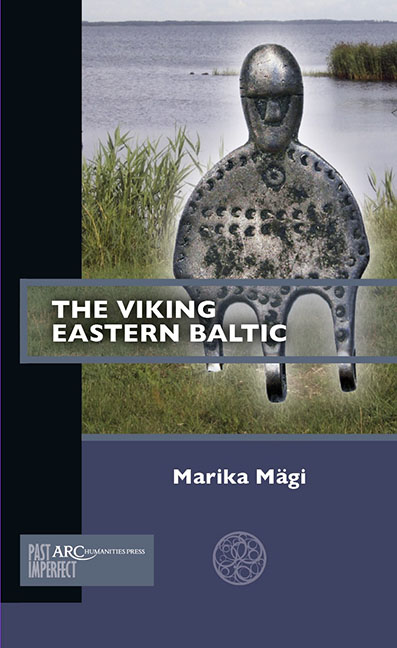Book contents
- Frontmatter
- Contents
- List of Illustrations
- Introduction
- Chapter 1 Different Cultures, Different Modes of Communication
- Chapter 2 Eastbound Routes Gain Momentum
- Chapter 3 Baltic Sea Warriors
- Chapter 4 The High-Point of Scandinavian Eastward Activity
- Chapter 5 End of the Viking Age
- Conclusion
- Further Reading
Chapter 2 - Eastbound Routes Gain Momentum
Published online by Cambridge University Press: 20 November 2020
- Frontmatter
- Contents
- List of Illustrations
- Introduction
- Chapter 1 Different Cultures, Different Modes of Communication
- Chapter 2 Eastbound Routes Gain Momentum
- Chapter 3 Baltic Sea Warriors
- Chapter 4 The High-Point of Scandinavian Eastward Activity
- Chapter 5 End of the Viking Age
- Conclusion
- Further Reading
Summary
Even though the Viking Age is generally taken to cover the period 800 to 1000/1050, the features that came to characterize this era first emerged many centuries earlier. In the fifth and sixth centuries of our era, the whole of Northern Europe experienced a surge in military activity across societies, a rise in weapon burials, and growing hierarchy in social structures. Long-distance trade boomed, and the Eastern Baltic was no exception in this respect. In fifth-and sixth-century Finland and Estonia, imports from the lands of eastern Finno–Ugric speakers and Scandinavia showed a remarkable increase (Fig. 4 and Fig. 5).
Contacts across the Baltic Sea were certainly facilitated by the introduction of sail technology, instead of or to supplement rowing. Despite speculation that sails may have been used in the Baltic much earlier, there is no evidence of sailing boats before the seventh century. Anyway, it is at about that time that sailing across the open sea appears to have become commonplace. In archaeology it is accompanied by a rapid Scandinavianization of several coastal areas in the Eastern Baltic.
The pre-Viking centuries saw not just the intensification of overseas contacts along the Baltic shoreline, but also increasingly important trade routes to faraway regions, like the Volga and Kama River basins. Most of these routes crossed the Eastern Baltic or followed its coast.
Routes and Stopping Places
There is a broad consensus among researchers that early prehistoric travellers preferred waterways to overland routes whenever and wherever possible. Especially in forested areas the maintenance of paths was difficult and they became almost impassable in spring and autumn. The sprawling wetlands, especially in the northern half of the Eastern Baltic, complicated travelling in summer yet provided a good base for winter roads during the frozen period. Seasonality of communication networks was a distinctive feature of the whole of Northern Europe.
Rivers, on the other hand, were navigable nearly all the year round: in summer by boats, and in winter by sledges. During the spring floods pushed water levels in the rivers of the northeastern coast of the Baltic Sea significantly higher for weeks, so even otherwise barely passable waterways could be travelled.
- Type
- Chapter
- Information
- The Viking Eastern Baltic , pp. 27 - 44Publisher: Amsterdam University PressPrint publication year: 2019



